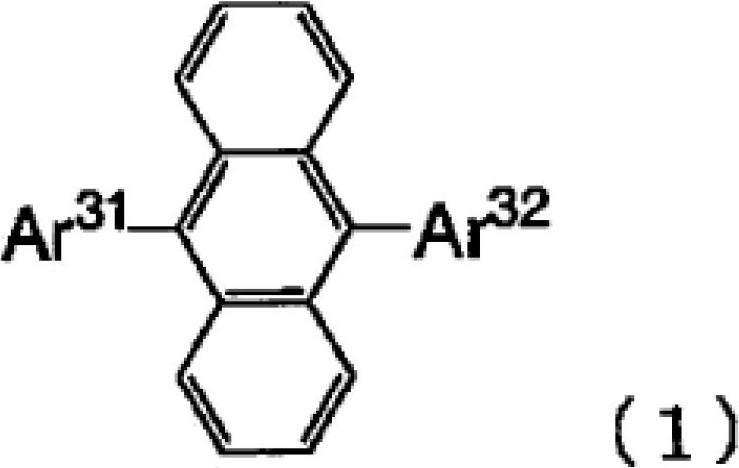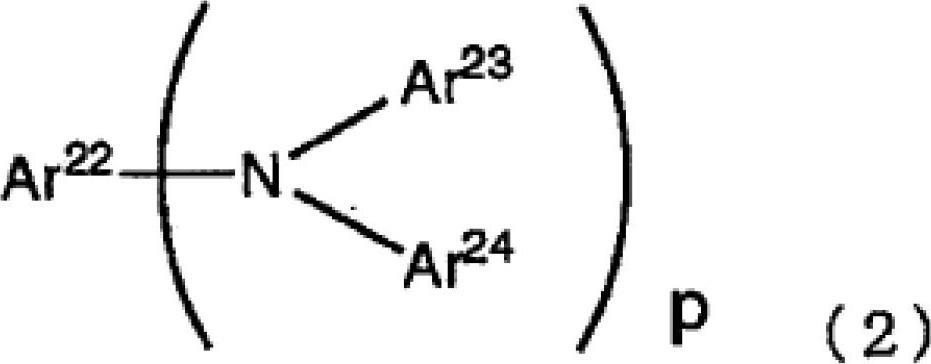Method for manufacturing organic electroluminescent element, organic electroluminescent element, display device and illuminating device
A technology of electroluminescent devices and manufacturing methods, which is applied in the direction of electroluminescent light sources, lighting devices, semiconductor/solid-state device manufacturing, etc., can solve problems such as damage, incorporation, and deterioration, and achieve high driving stability, long driving life, The effect of low manufacturing cost
- Summary
- Abstract
- Description
- Claims
- Application Information
AI Technical Summary
Problems solved by technology
Method used
Image
Examples
Embodiment 1)
[0340] Made with figure 1 The organic electroluminescence device of the structure shown.
[0341] A product obtained by depositing an indium-tin oxide (ITO) transparent conductive film at a thickness of 150 nm on a glass substrate 1 (sputtered film product; sheet resistance 15 Ω) is patterned to a thickness of 2 mm using usual photolithography techniques and hydrochloric acid etching. The anode 2 is formed in a wide stripe shape. The patterned ITO substrate was cleaned in the order of ultrasonic cleaning with acetone, water washing with pure water, and ultrasonic cleaning with isopropanol, then dried with nitrogen gas, and finally ultraviolet ozone cleaning was performed.
[0342] Next, the hole injection layer 3 was formed by the following wet film-forming method. A charge transport material having an aromatic amino group (PB-1 (weight average molecular weight: 52000, number average molecular weight: 32500)) with the following structural formula and an electron-accepting c...
Embodiment 2)
[0380] Using the compound (HO-2) of the following structural formula instead of the organic compound (HO-1) as the material of the light-emitting layer, spin-coating was performed under the same conditions, and the organic electroluminescence was produced in the same manner as in Example 1. Light emitting devices.
[0381] Among them, a uniform thin film (light-emitting layer) with a film thickness of 40 nm was formed by spin coating.
[0382]
reference example 1)
[0384] Using the compound (HO-3) of the following structural formula instead of the organic compound (HO-1) as the material of the light-emitting layer, spin-coating was performed under the same conditions, and the organic electroluminescence was produced in the same manner as in Example 1 Light emitting devices.
[0385] Among them, a uniform thin film (light-emitting layer) with a film thickness of 40 nm was formed by spin coating.
[0386]
PUM
| Property | Measurement | Unit |
|---|---|---|
| thickness | aaaaa | aaaaa |
| boiling point | aaaaa | aaaaa |
| thickness | aaaaa | aaaaa |
Abstract
Description
Claims
Application Information
 Login to View More
Login to View More - R&D
- Intellectual Property
- Life Sciences
- Materials
- Tech Scout
- Unparalleled Data Quality
- Higher Quality Content
- 60% Fewer Hallucinations
Browse by: Latest US Patents, China's latest patents, Technical Efficacy Thesaurus, Application Domain, Technology Topic, Popular Technical Reports.
© 2025 PatSnap. All rights reserved.Legal|Privacy policy|Modern Slavery Act Transparency Statement|Sitemap|About US| Contact US: help@patsnap.com



